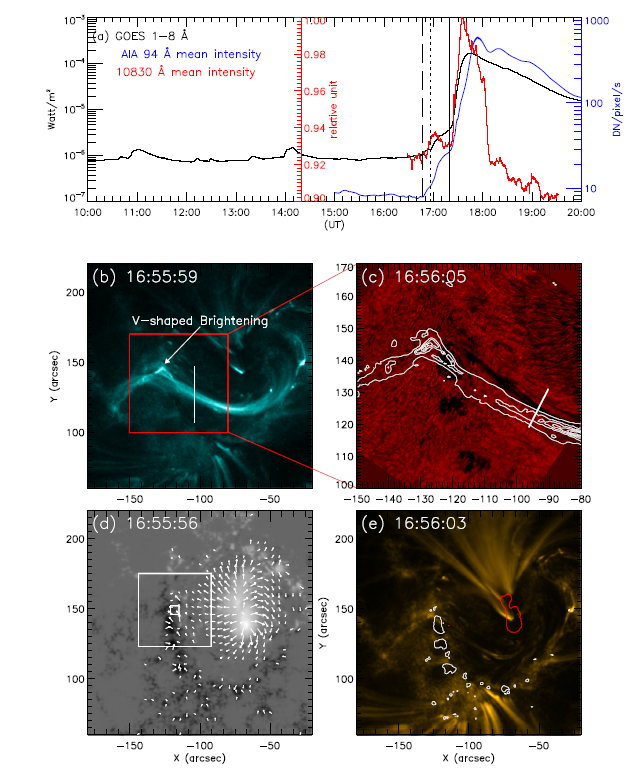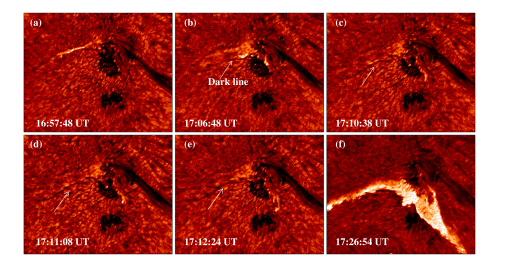A research team led by Dr. SHEN Jinhua from Xinjiang Astronomical Observatory of the Chinese Academy of Sciences investigated the evolution of flaring active region NOAA 12158 using the high-resolution observations from the Big Bear Lake Observatory (BBSO) and Solar Dynamic Observatory (SDO).
Related results were published in Astronomical and Astrophysical Research.
The researchers found that there was a stronger photosphere current driving the flare eruption accompanied by particle acceleration before onset of the flare. The initiation process of solar eruption followed a series of small-scale activities and the formation of unstable magnetic flux rope.
"In the study, we investigate the magnetic reconnection process, powering, and the acceleration of particles during the flare precursor phase," said Dr. SHEN.
They found that the magnetic reconnection initiating the flare occurred between one of the two J-shaped magnetic arcades and the overlying sheared magnetic arcade. While, the other J-shaped magnetic arcade remained unaffected during the whole eruption, revealing the complex magnetic reconnection process of the formation of magnetic flux.
Moreover, the researchers calculated the photosphere vertical current, and found that the photosphere vertical current began to increase slowly 30 minutes before the onset of the flare until the magnetic flux rope was fully formed.
"The formation of the magnetic flux rope is accompanied by the injection of a more intense electric current. The radiation in the hot channel is significantly enhanced before the onset of the flare, accompanied by a non-thermal electron acceleration process," said Dr. SHEN.
The researchers will continue to study the relationship between carrying current emergence and flaring eruption in active regions and further reveal the physical mechanism of flaring triggering and driving.

Fig. 1 Upper panel (a) gives its time profiles in 1–8 ? (black), 94 ? (blue) and 10830 ? (red) integrated over full disk or the entire flare region. (b)-(d) show the images at multi-wavelength and vector magnetograph.

Fig 2. High resolution He I 10830 ? frames taken at different times during the precursor phase (panels (a)–(e)) and the moment of flaring (panel (f)). The white arrows point to the narrow dark front during the precursor phase .
Contact: SHEN Jinhua
Xinjiang Astronomical Observatory, Chinese Academy of Sciences
Email:shenjh@xao.ac.cn
Web: https://doi.org/10.1088/1674-4527/ac389b